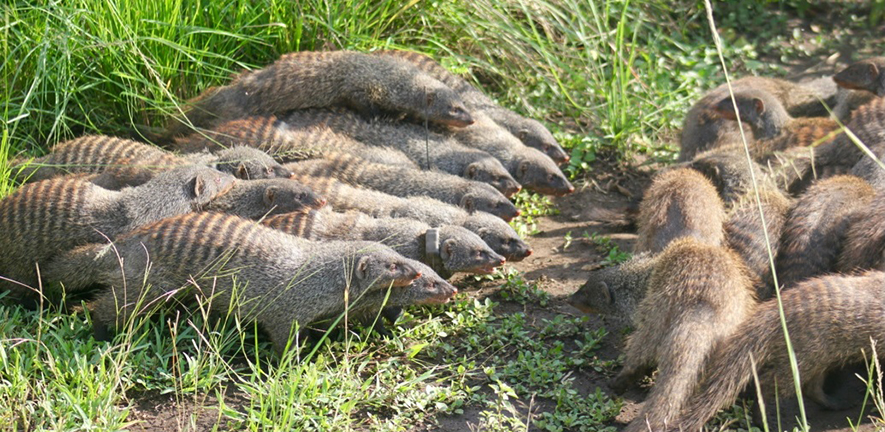
Mongoose groups fighting
Credit: Banded Mongoose Research Project
Female mongooses start violent fights to mate with unrelated males
Female banded mongooses lead their groups into fights then try to mate with enemy males in the chaos of battle, new research has found. Meanwhile, males bear
Mongooses rarely leave the group they are born into, so members are usually genetically related. The new study, published today in the journal Proceedings of the National Academy of Sciences, reveals how females get around the problem of inbreeding.
The research team, led by the University of Cambridge and the University of Exeter, say ‘exploitative leadership’ of this kind, which is also seen in human warfare, leads to frequent and damaging conflicts.
"Female banded mongooses start fights between groups to gain genetic benefits from mating with outsiders, while the males within their group – and the group as a whole – pay the costs,” said Professor Michael Cant, at the Centre for Ecology and Conservation on Exeter’s Penryn Campus in Cornwall, who was involved in the research.
He added: "A classic explanation for warfare in human societies is leadership by exploitative individuals who reap the benefits of conflict while avoiding the costs.
"In this study, we show that leadership of this kind can also explain the evolution of severe collective violence in certain animal societies."
Dr Faye Thompson at the University of Exeter, and senior author of the report, added: "The findings do not fit a heroic model of leadership, in which leaders contribute most to aggression and bear greatest costs, but rather an exploitative model, in which the initiators of conflict expose others to greater risks while contributing little to fighting themselves."
The findings suggest that decoupling leaders from the costs of their choices amplifies the destructive nature of intergroup conflict.
Professor Rufus Johnstone from the University of Cambridge’s Department of Zoology and first author of the report, said: "Exploitative leadership in banded mongooses helps to explain why intergroup violence is so costly in this species compared to other animals.
"The mortality costs involved are similar to those seen in a handful of the most warlike mammals, including lions, chimpanzees - and of course humans."
The study used long-term data from wild banded mongooses in Uganda.
Reference
Johnstone, R.A. et al; “Exploitative leaders incite intergroup warfare in a social mammal." Proceedings of the National Academy of Sciences, Nov 2020. DOI: 10.1073/pnas.2003745117
Adapted from a press release by the University of Exeter.
